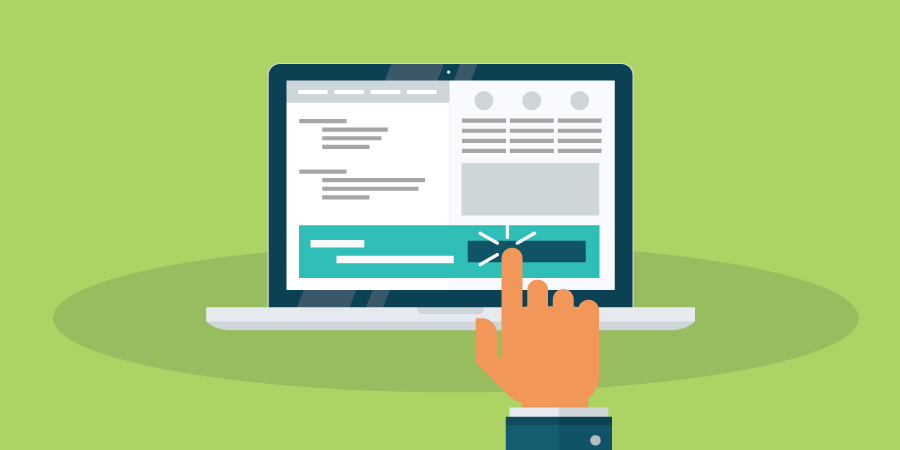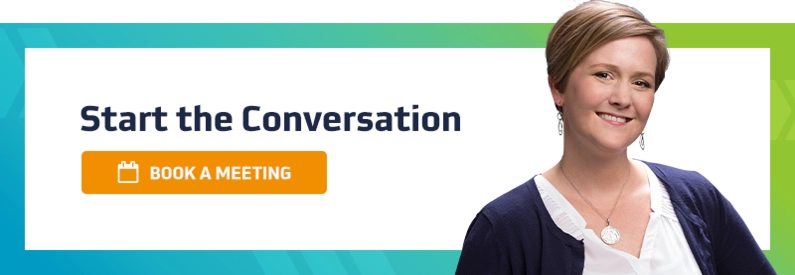Increase Your B2B Website Sales With a Streamlined Conversion Path
 Krista
|
Krista
|

As a B2B business owner, you're likely familiar with the challenge of attracting traffic to your website. You’re not alone, as more than half of businesses said that SEO had the most impact on their lead-generation efforts. Attracting traffic is one-half of the equation, and converting them into valuable leads is the second half.
If you find yourself in a situation where you're getting plenty of website traffic but have yet to see the desired increase in leads and sales, it might be time to take a closer look at your conversion paths.
The Importance of a Clear Conversion Path on Your Website
A conversion path is a strategic series of steps to guide website visitors toward becoming leads or potential customers. This involves creating a way for users to follow from their initial interaction with your website to the final conversion point. It's about turning casual browsers into engaged prospects and loyal customers. A well-crafted conversion path should complement your content marketing efforts and work hand in hand with attracting high-quality traffic.
There are many successful conversion paths; for example, you can include clear call-to-actions, simple forms, compelling offers, and a thank-you page with clear next steps. A landing page is designed to collect a visitor's contact information in exchange for something of value. A call-to-action (CTA) persuades visitors to take action. A content offer is given in exchange for contact information. And a thank you page shows appreciation for the visitor's action.
Implementing a follow-up strategy is also crucial for nurturing leads and guiding them through their buyer's journey. Continuously evaluate and optimize your conversion path to align with your audience's needs and preferences. By doing so, you can gather more information and boost sales.
Tips for Understanding Your B2B Website Audience
One of the fundamental principles of creating effective conversion paths is knowing your target audience inside out. Different visitors will have distinct interests, pain points, and motivations. To cater to their needs, you must create conversion paths that align with their interests. This involves understanding the different stages of the buyer's journey and crafting courses that address visitors' unique questions and concerns at each location.
Here’s what to consider when understanding your audience:
- Identify Your Target Audience: Start by defining who your ideal customers are. Consider their demographics, interests, and pain points. This will help you create content and offers that are specifically designed to appeal to them.
- Segment Your Audience: Not all visitors to your website will be at the same stage in the buyer's journey. Segmenting your audience based on their level of awareness or engagement can help you create personalized conversion paths for each group. For example, someone at the awareness stage may need more educational content, while someone further along in the buyer's journey may be ready for a more sales-focused approach.
- Engage Your Audience: Keeping your audience engaged and analyzing your data from your website and social media will help you better understand their needs, preferences, and pain points so you can tailor them to their needs. Doing this will help you create content that will hit with their pain points.
Key Metrics for Evaluating Your B2B Website Performance
Before optimizing your conversion path, you must assess your current website setup. One common issue we often encounter is the need for a clear next step for visitors. To remedy this, it's essential to provide clear call-to-actions that guide users toward desired actions. Even if a visitor is still getting ready to purchase, you can refer them to your sales funnel by offering helpful resources catering to their needs.
Before implementing any changes, look for areas where visitors may encounter obstacles or confusion. Are your call-to-actions clear and easily visible? Are your forms simple? Is your messaging tailored to your target audience's interests and needs?
Take the time to analyze your website's performance and identify any areas for improvement. By addressing these issues, you can enhance the effectiveness of your conversion path and increase the likelihood of converting visitors into leads or customers. Continuously monitor and optimize your website to ensure it aligns with your audience's preferences and provides a seamless user experience. Remember, a well-designed and user-friendly website is the foundation for a successful conversion path.
How to Create a Successful Conversion Path for Your Website
A successful conversion path relies on several key elements that work together to engage and entice visitors:
- Clear Call-to-actions: These signposts direct users on what action to take next. Whether downloading a resource, signing up for a newsletter, or requesting more information, your call-to-action should be prominently displayed and compelling.
- Simple Forms: When asking for visitor information, keep your forms simple and concise. If users are in the awareness or education phase, keep them from overwhelming them with extensive form fields. You can gather more detailed information as they progress into the funnel.
- Compelling Offers: To capture the attention of visitors who might need more time to be ready to buy, offer them something of value. This could be an informative e-book, a helpful guide, or access to an exclusive webinar.
- Educational Content: Educate your target market by addressing their pain points and providing solutions they're actively searching for. This establishes your credibility and positions your brand as an industry leader.
- Tailored Messaging: Craft your messaging to resonate with each stage of the buyer's journey. Speak to their needs, questions, and objections to build a stronger connection.
- Thank You Page: A well-designed thank you page can enhance the overall experience for visitors to your website. You can also use the thank you page to offer relevant and personalized content recommendations, such as blogs.
Nurturing Leads and Convert Them into Customers
To maximize the effectiveness of your conversion path, implement a follow-up strategy. Send a follow-up email to engage with leads, provide additional value, and guide them toward the next stage of their buyer's journey. This helps build trust and keeps your brand top-of-mind.
A streamlined conversion path is essential for increasing B2B website sales. By implementing clear CTAs, simple forms, compelling offers, and thoughtful follow-up strategies, you can guide visitors through their buyer's journey and turn them into valuable leads. To help you better your conversions, set up a meeting with Krista to help you with possibilities and ideas to help you do so. Book your meeting today!
Subscribe to Our Blog
Stay up to date with the latest marketing, sales, and service tips.


